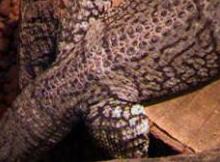



| Texture representation makes computer-generated images realistic. Many of traditional texture representation techniques are based on "texture mapping", which maps 2D or 3D images onto geometries. These techniques has essential problems such as distortion of images due to complicated geometries. We focused on automatic generation of fine geometric features onto 3D geometric models , without manually designing such features or mapping real images onto the geometric models. Especially we focused on the representation of stone pavement and skins of reptiles using our techniques. |
We started this study by observation of real images of
stone pavement and reptiles, which are taken by one of the research members.
Above two figures are photographs of real reptiles in a zoo.
Right two figures are photographs of stone pavements in Japanese
traditional parks or towns.
From these figures we can find that these texture consist of rough
division of skins into pieces of polyhedrons, and the polyhedrons
have fine bumps. We designed our technique as the following two steps:
|
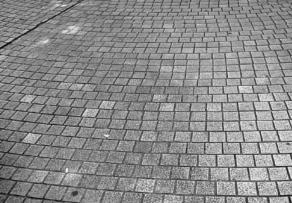
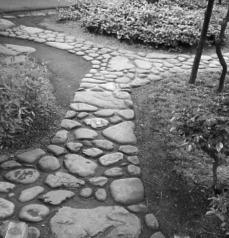
|
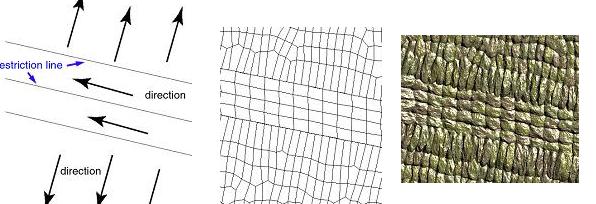
|
| Upper figure denotes the overview of our approach. Left illustrates the input data of our techniqie. The technique automatically divides the input geometry into pieces of polygons as shown in center, by generating particles along the input lines. Right is the rendered image after generating bumps onto the geometry. |
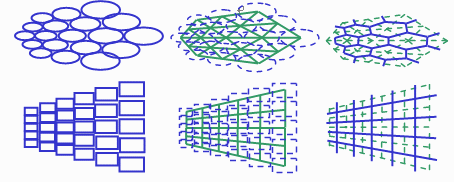
|
|
Upper figure denotes the overview of our pattern generation technique.
Left shows an example of tightly packed circular or rectangular particles. Our technique assumes that each particle has molecular-like dynamics, which works as attractive or repulsive forces. By applying dynamics equation of particles, our technique obtain a stable configuration of particles. We use rectangular particles as pattarns of stone pavements. Center shows an example of triangular or quadrilateral mesh connecting centers of the particles. Rights shows an example of hexagonal or quadrilateral patterns used as patterns of skins of reptiles, which are obtained as Voronoi diagram of the triangular or quadrilateral mesh. |

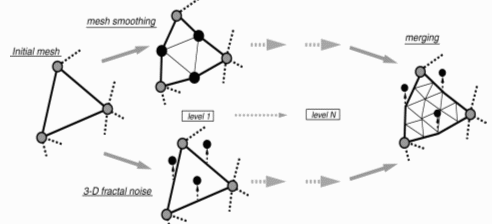
|
Fine bump generation technique consists of the following steps:
|
| Right two figures are the example of stone pavements represented by our tecnique. |
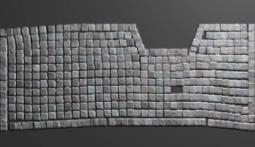 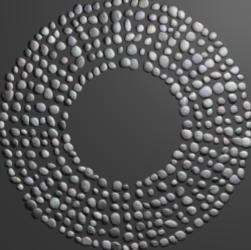
|
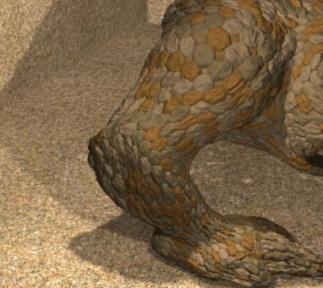
| Left figure is the example of a leg of reptile represented by our tecnique. |
Related publications:
Miyata K., et al., A Method of Generating Pavement Textures Using the Square Packing Technique, SIGGRAPH 2000 Sketch and Applications, 2000.
Miyata K., et al., A Method of Generating Pavement Textures Using the Square Packing Technique, The Visual Computer, Vol. 17, No. 8, pp. 475-490, 2001.
Miyata K., et al., Organic Textures with Controlled Anisotropy and Directionality, SIGGRAPH 2001 Sketch and Applications, 2001.
Itoh T., et al., Organic Textures with Controlled Anisotropy and
Directionality, IEEE Computer Graphics & Applications, Vol. 23, No. 3,
pp. 38-45, 2003.